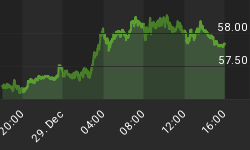There's been a bear market call every day since the U.S. stock market crashed on August 24. I'd like to lay this argument to rest. A bear market is not about to begin.
We do not define bear markets as declines that exceed 20%. Rather, we define bear markets as a condition in which falling prices cause widespread pessimism, which causes the selloff to reinforce itself. Based on this definition, a 20% decline doesn't cut it. History is replete with examples of the S&P declining 20% in just 1-2 months and then quickly soaring to new highs.
Based on this definition, we count the following as bear markets:
- 1968-1970
- 1973-1974
- 2000-2002
- 2007-2009
The interesting thing is that all of these bear markets witnessed declines that exceeded 33.33% and lasted for more than 1 year.
I mentioned in a post that there are two things that can cause a bear market.
- A fundamental problem in the U.S. economy.
- A bubble in the U.S. stock market.
It's easy to discern if there's a fundamental problem in the U.S. economy. Just look at the economic data. The bear markets of 1973-1974 and 2007-2009 were caused by fundamental problems in the U.S. economy. Note that neither of the bull markets that preceded these bear markets had reached bubble territory when the bull markets ended.
It's harder to tell if there's a bubble in the U.S. stock market. Many investors fail at this because they don't quantify the definition of a "bubble". They believe that the stock market is in a bubble whenever it rises too rapidly and investors are optimistic.
That's why our firm quantifies the definition of a bubble based on 2 types of indicators. For the market to be in a bubble, these 2 indicators must vastly exceed their long term average. A bear market cannot begin as long as the indicators do not significantly exceed their long term averages and the U.S. economy is fine.
The Current Bull Market
Let us now turn our attention to the current bull market. There are no problems in the U.S. economy right now and the stock market is not in a bubble.
The economic data shows you that the U.S. economy is still growing. Housing is the best leading indicator for the U.S. economy. The U.S. housing market is still improving steadily as of the data for August 2015.
Below are a few charts from economist Bill McBride.

As you can see from the chart above, New Home Sales are still growing at a nice pace. The thing to note here is that new home sales almost always begin to decline before a bear market or a recession begins.


As you can see from the 2 charts above, both Housing Starts and Housing Permits are doing just fine. Like New Home Sales, Housing Starts and Housing Permits almost always decline before a bear market or a recession begins.
The year-over-year change in employment is also bullish for U.S. stocks. As you can see in the chart below, YoY change in employment always turns south before a bear market or recession begins. That is clearly not the case right now.

Since there is no fundamental problem in the U.S. economy right now, the only driver of a potential bear market can come from the U.S. stock market being in a bubble. Various indicators show that the U.S. stock market has not reached bubble territory yet.
A key indicator that we look at when study bubbles is the value of Mergers and Acquisitions deals in the U.S. Specifically, we are looking for the value of M&A deals to shatter all previous records by multiples.

The above chart shows that M&A deals are just beginning to pick up and make new highs. It will be years before the value of M&A deals can soar, which means that it will be years before the U.S. stock market can enter into "bubble" territory.
Another popular valuation indicator is Tobin's Q.

Investors commonly use Tobin's Q as an absolute value. This means that if the Q ratio reaches 1.1, investors say it's "overvalued" and a bear market can begin. We disagree. We look at the change in Tobin's Q from the lowest Q ratio during the last bear market.
History shows that for a market to enter into bubble territory, the Q ratio must increase by at least 0.6 in a bull market. The Q ratio has only increased by 0.52 in this bull market. This means that this bull market still has some room to run.
















